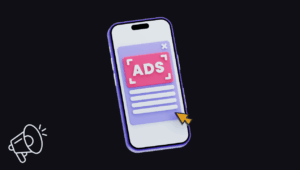In a world where audiences are bombarded with ads, branded content offers a refreshing alternative. Instead of shouting “buy now,” it invites people into a story they want to follow. Done right, branded content builds loyalty, creates emotional connections, and turns brands into trusted voices rather than just sellers. This guide will walk you through creating an authentic branded content strategy from the ground up so your message not only reaches people but resonates deeply. In this article, we’ll explore the secrets of branded content strategy creation, a blueprint for authentic storytelling.
What Branded Content Really Means
Branded content is any form of content that reflects your brand’s values, personality, and mission while delivering value to your audience. It’s not a sales pitch disguised as a blog post. As a result, not just product placement in a video. It’s storytelling where your brand becomes part of a narrative that matters to your audience.
The best branded content feels less like marketing and more like a conversation. Think of Coca-Cola’s “Share a Coke” campaign or Red Bull’s extreme sports storytelling. The audience remembers the emotion, the moment, and the message. So, long after they’ve forgotten the traditional ads.
Why Authentic Storytelling Works: Branded Content Strategy
People are naturally drawn to stories. Neuroscience research shows that storytelling activates more areas of the brain than facts alone, increasing engagement and recall. When a brand tells a story rooted in truth, it builds trust. Authenticity doesn’t mean being perfect. As a result, it means being consistent, transparent, and aligned with your audience’s values for authentic storytelling.
If your content tries too hard to sell or feels disconnected from your brand identity, audiences notice. Authentic branded content makes the audience feel something first, and think about buying second.
Key Elements of an Authentic Branded Content Strategy
| Element | Why It Matters | How to Apply It |
|---|---|---|
| Brand Purpose | Guides storytelling and gives meaning | Define your mission beyond profit and link every story to it |
| Audience Understanding | Ensures relevance and emotional connection | Use surveys, analytics, and social listening to understand needs and values |
| Narrative Consistency | Builds familiarity and trust | Keep tone, visual style, and messaging consistent across platforms |
| Value-First Approach | Keeps audience engaged beyond sales | Focus on education, entertainment, or inspiration before promoting products |
| Multi-Platform Distribution | Reaches audience where they are | Adapt content formats for each channel without losing core message |
| Measurable Goals | Shows ROI and guides improvements | Set KPIs like engagement rate, brand sentiment, and lead generation |
| Emotional Story Arcs | Creates memorable, shareable moments | Use relatable struggles, victories, and transformations in your content |
Step 1 Branded Content Strategy: Define Your Brand Purpose
Before you create anything, get crystal clear on your brand purpose. Why does your business exist beyond making money? Your purpose might be to empower small businesses, promote sustainable living, or inspire healthier lifestyles. This purpose should be the thread that ties all your stories together.
When Patagonia shares a video about environmental conservation, it’s not random. So, it’s a direct reflection of its purpose. The more aligned your content is with your purpose, the more it will feel authentic storytelling.
Step 2: Understand Your Audience on a Human Level
Demographics are just the beginning. You also need to know your audience’s beliefs, fears, aspirations, and habits. For example, if you’re targeting millennial parents, knowing they’re 28–40 years old is useful, but knowing they value convenience, work-life balance, and eco-friendly products is gold.
Use tools like Google Analytics, social media insights, and customer interviews to build detailed audience personas. These personas should guide not just what you say, but how you say it.
Step 3 Branded Content Strategy: Craft a Brand Narrative
Your brand narrative is the overarching story you tell over time. It’s the big picture of who you are, what you stand for, and why people should care. Every piece of branded content should fit somewhere in this narrative authentic storytelling.
If your brand is about innovation, your stories might center on breaking boundaries, solving problems in new ways, or showcasing people who defy expectations. If your brand is about community, your stories might highlight collaborations, shared experiences, and local heroes.
Step 4: Deliver Value First, Sell Later
Think of branded content as a gift. Before you ask for anything in return, you’re giving your audience something they’ll appreciate. So, knowledge, entertainment, or inspiration.
A home décor brand might create a video series on interior design trends, with subtle product placements. A tech company might release a podcast interviewing industry experts. The sale comes as a natural byproduct of trust and connection, not as the main event.
Step 5: Adapt Your Stories for Multiple Platforms
Great branded content meets audiences where they are. That means translating your story into formats that work for each channel. An in-depth brand film might live on YouTube, but you can cut it into Instagram Reels, write a companion blog post, and turn quotes into shareable graphics.
The key is to maintain your narrative and visual consistency while respecting each platform’s culture. A 15-second TikTok needs a different pace and tone than a LinkedIn article, but both should feel unmistakably like your brand.
Step 6: Measure and Refine
Storytelling is creative, but strategy is data-driven. Track metrics that match your goals, whether that’s engagement rate, social shares, brand sentiment, or leads generated. Use this data to refine your approach, doubling down on stories that resonate and adjusting those that fall flat.
Tools like Brandwatch, Google Analytics, and native social platform insights can help you see patterns in what your audience loves most.
Examples of Authentic Branded Content Done Right
- LEGO: Instead of focusing only on toys, LEGO creates movies, games, and user-generated content that celebrate creativity itself.
- Dove’s Real Beauty Campaign: Focused on real women and self-esteem, the brand aligned itself with a cause that resonates deeply with its audience.
- Nike’s “You Can’t Stop Us”: A visual masterpiece blending sports, diversity, and resilience. So, embodying Nike’s core message of empowerment.
Common Mistakes to Avoid
- Being inconsistent with tone or values across different content pieces
- Overloading stories with product details instead of focusing on the human element
- Ignoring audience feedback and continuing with irrelevant narratives
- Copying competitors instead of finding your unique voice
Bringing It All Together
An authentic branded content strategy is about more than one viral video or clever post. It’s about building a lasting emotional connection with your audience through stories that reflect who you are and what you stand for. By grounding your strategy in purpose, audience insight, and value-first storytelling, you can create content that not only gets noticed but remembered.
If you commit to authenticity, stay consistent, and measure your impact, branded content will become one of your most powerful tools for long-term brand growth.








